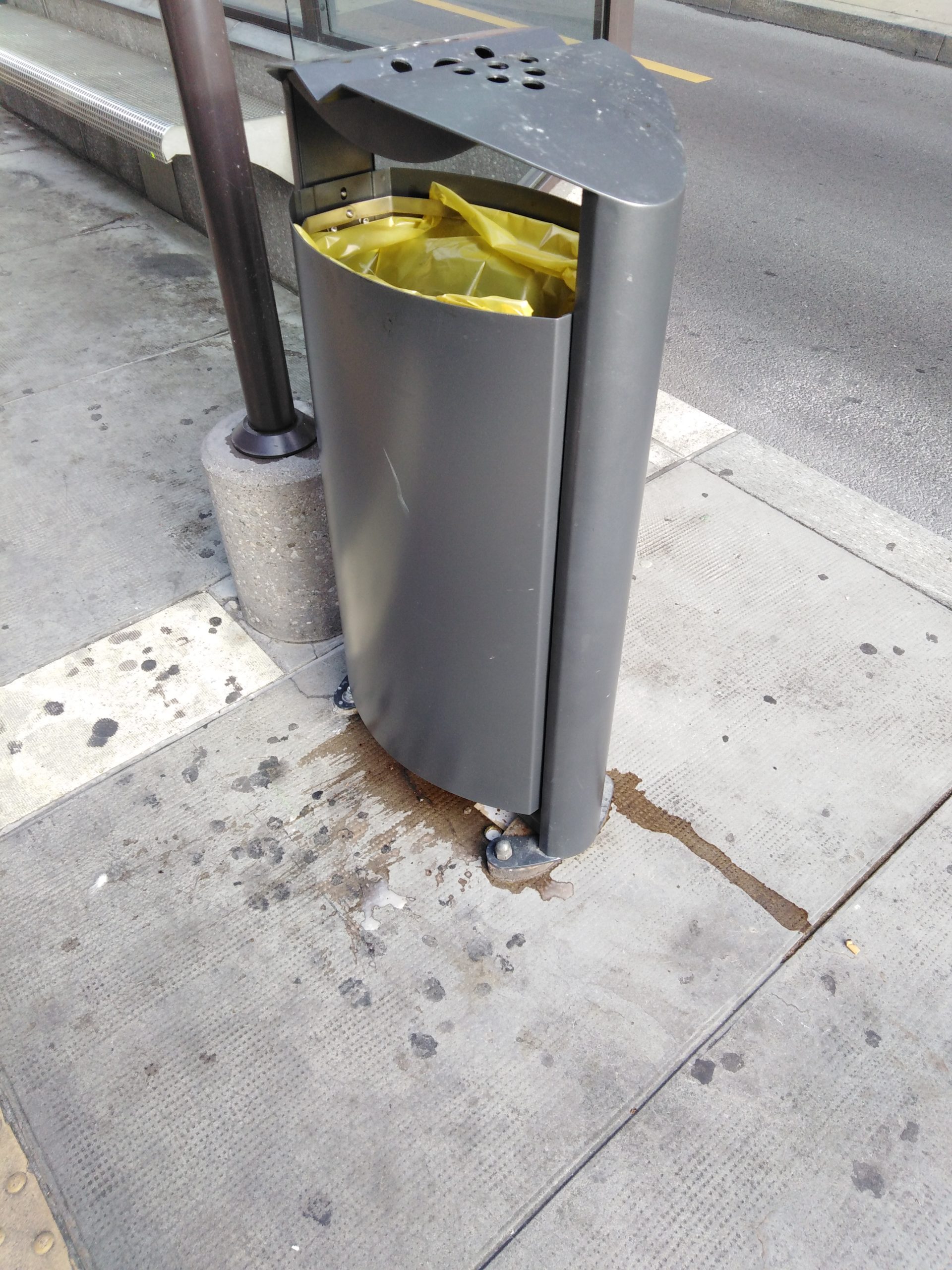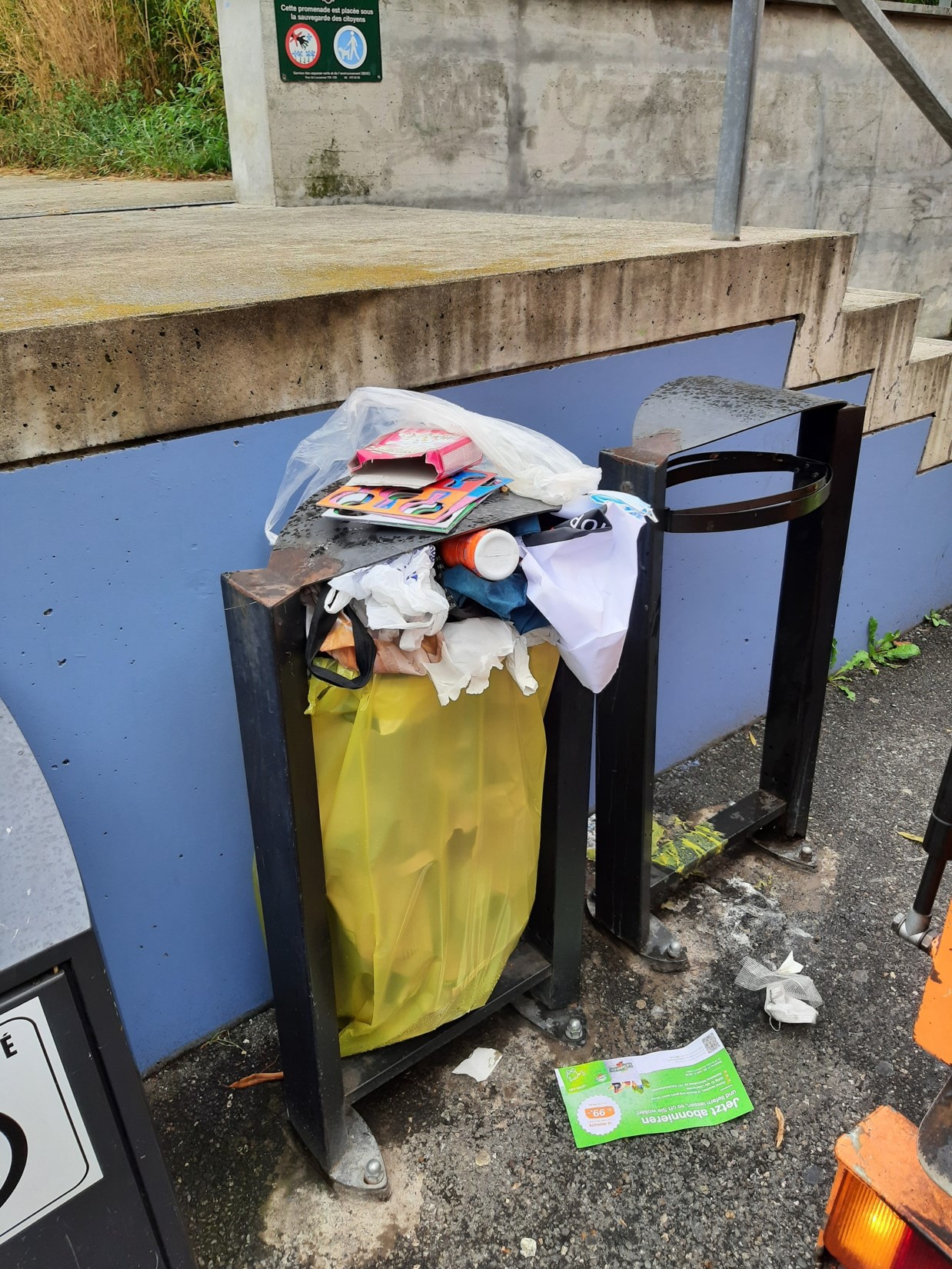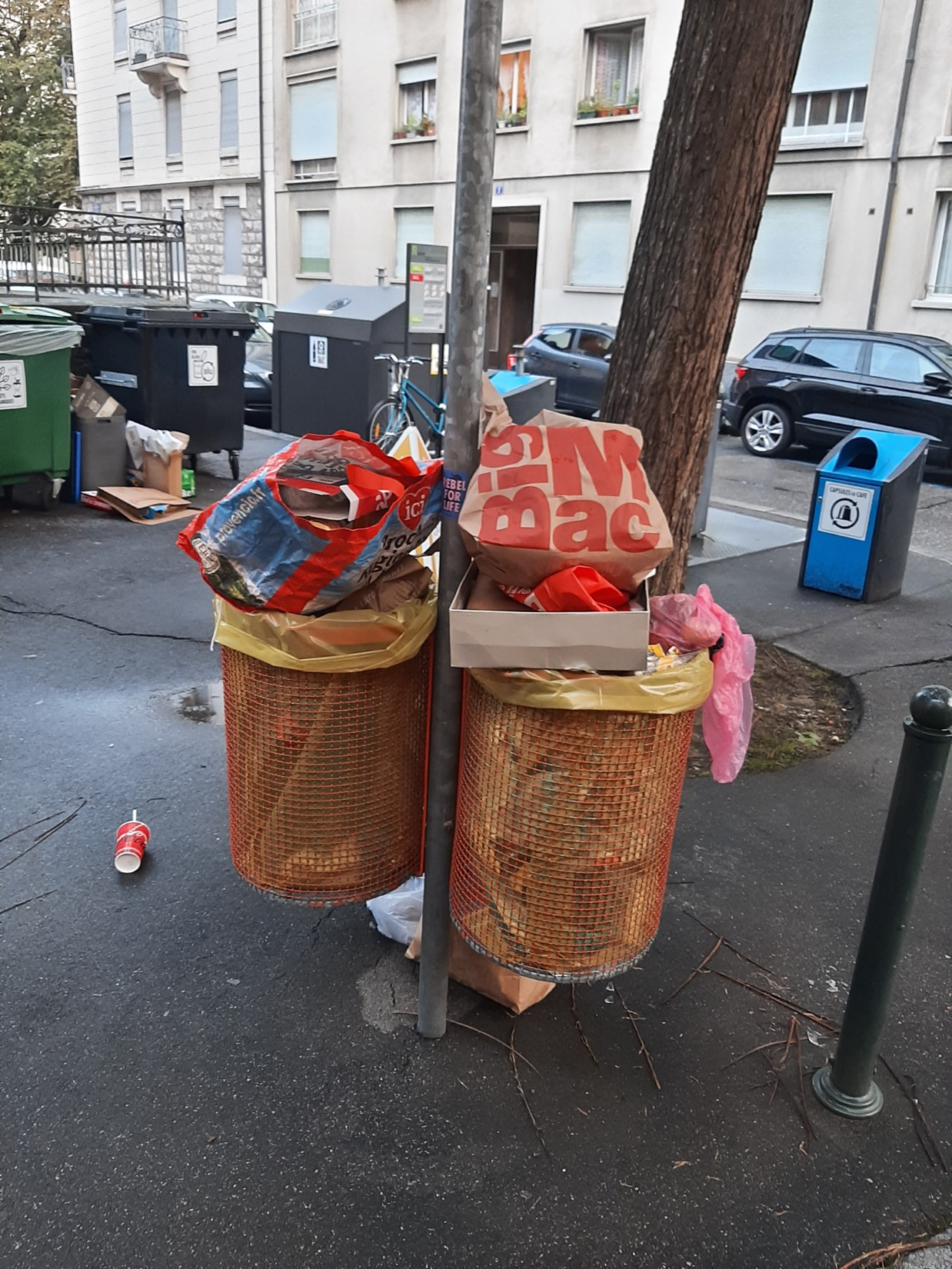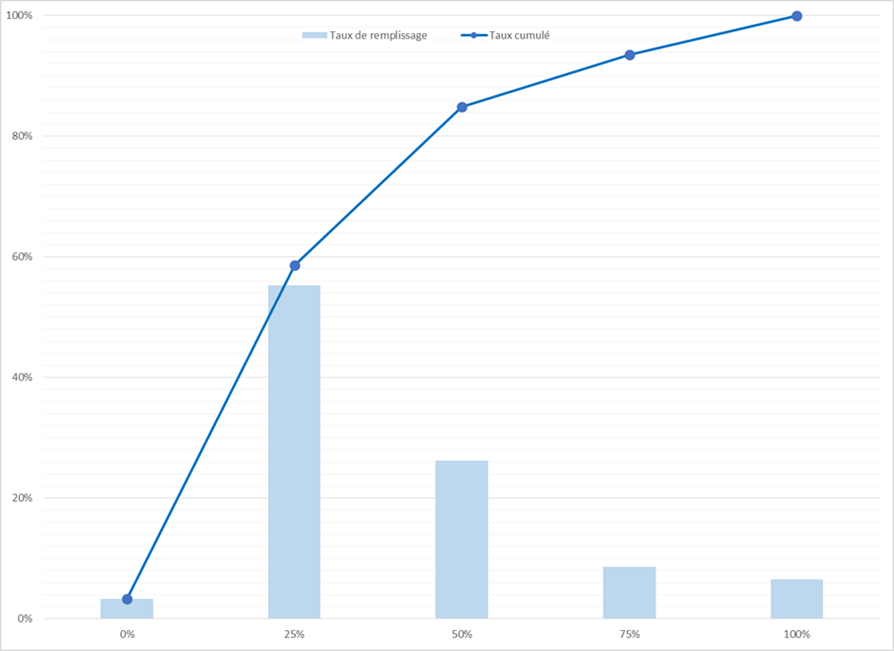Putting waste in the appropriate bins preserves the quality of the environment in general and the urban environment in particular. Properly disposed of waste does not have to be collected by the city’s cleaning services, which also significantly reduces the costs of maintaining urban cleanliness, and therefore the burden on taxpayers.
It is therefore necessary to act, first of all, on behaviour, which is precisely the role of prevention. This can be based on intrinsic motivations, the power of which is still underestimated. The team from the Humboldt University in Berlin measured (by pupillary reactions) the emotional charge of abandoning waste in public spaces. Dr. Rebekka Gerlach emphasises: “Contrary to what the experts had previously thought, this apparently minor offence triggers a major reaction in the perpetrator. Violating social norms or our values provokes a strong feeling of injustice. This could be used as a driving force for behavioural changes and confirms the potential of prevention actions.”
Street litter bins play a particularly inciting role in prevention, but there is no “one size fits all” recipe. Indeed, adding litter bins to every street corner indiscriminately is not enough to improve cleanliness. On the contrary, several cities have found that a smaller number of litter bins yields better results when certain conditions are met.
URBAN APPEARANCE OR EFFICIENCY OF LITTER BINS
In Europe, public waste receptacles are part of urban furniture. However, their integration into urban architecture varies greatly from one city to another. For example, some touristic cities try to hide them so as not to make their squares look ugly. However, for waste receptacles to fulfil their role they must be visible and their function must be well understood.
In a previous article4, we showed through an experiment by the Geneva Clean City Lab that more visible litter bins with a more obvious ashtray function made it possible to reduce the amount of waste on the ground by half. This improvement in the level of cleanliness can also be translated into time savings for the maintenance of the bins. For example, the time required to clean the tram stops where the bins were installed was reduced from 7 to 4 minutes. This characterization of the maintenance effort at public transport stops revealed potential for improving the ergonomics of the bins. The bins were modified accordingly to make the work of the staff member easier and the bag changes faster. The maintenance time per stop was reduced to 3 minutes, which means a time saving of more than 50% and less work.
There are other potential improvement measures that have been identified but not yet addressed: i) the system of fixing the waste receptacles to the ground by bolts makes cleaning around the bins difficult, ii) stains caused by leachate from the damaged bags are hard to clean.
It is therefore very important to take into account the integration of city furniture into the urban architecture, the efficiency of its function, its ergonomics and maintainability at the time of choosing. Small-scale tests allow these issues to be addressed before deploying the equipment on a large scale. The characterization of the quantities of waste and of the time required for maintenance allow us to make consequent choices.

i) the system of fixing the waste receptacles to the ground by bolts makes cleaning around the bins difficult, ii) stains caused byleachatefrom the damaged bags are hard to clean .
WHAT IS THE OPTIMAL NUMBER FOR TRASH BINS IN A CITY?
The AVPU (Association des Villes pour la Propreté Urbaine) reports that France has an average of one litter bin per 135 inhabitants. This figure varies from 30 to 300 in the sample of 51 cities surveyed5. A German counterpart, the VKU (Verband Kommunaler Unternehmen), reports one litter bin for every 129 inhabitants 6.
As we have seen, visible and well-placed bins are much more effective. It is therefore difficult to determine an optimal quantity per inhabitant without measuring the level of cleanliness. What Laurent Calatayud of Nice proposes is to determine the quantities and positions of litter bins according to the level of soiling measured in the street. This approach of placing street furniture according to the level of cleanliness measured locally has already borne fruit in the case of ashtrays for the town of Montreux 4. Franck Volpi, urban cleaning manager of the city of Geneva, adds: “With the Clean City Lab, we were able to demonstrate that the new litter bins we designed were twice as effective as the previous ones. We will gradually replace the current fleet of 2,000 litter bins, accompanying this change with measurements of the level of cleanliness. Our objective is to reduce the number of litter bins by one third”.
Certaines zones critiques demandent une démarche dédiée. Les zones de collecte de déchets ménagers, en France les « points d’apport volontaires » ou les poubelles qui débordent fréquemment sont des « points chauds » qui semblent provoquer les mauvais comportements et attirer les déchets sauvages ou le littering. Il faut dans ce cas revoir le concept de la zone afin qu’elle puisse absorber les déchets à collecter et éviter un effet d’accumulation.


Poorly dimensioned areas for household waste collection (left) or street litter bins (right) will attract other litter.
HOW DOES BETTER LITTER MANAGEMENT REDUCE THE NEED FOR RESOURCES ?
Litter bins can significantly improve the cleanliness of streets. To be effective, they must be kept clean and not overflow. Their maintenance and emptying require staff and vehicles, and represent significant costs for the community (even if they are lower than those for cleaning). Thus, investment and maintenance costs can be significantly reduced by reducing the number of litter bins, for an equivalent or even better level of cleanliness.
The Clean City Lab was interested in the potential for optimising the emptying of waste bins. To do this, we developed a smartphone application that allows the agentto record the rate of filling of the bins, to indicate whether the bag is changed and to report any problems by taking photos (it was these photos that confirmed the importance of dealing specifically with “hot spots”).
We carried out ten days of measurements in the experimental area (Louis-Favre district of Geneva). The average filling rate of the litter bins measured was 40%. The officers almost systematically changed the bags when they passed by Only 15% of the bags changed were more than 50% full.

The user interface of the Cortexia application.

The histogram of filling rate and bag changing measured by the App
The results of this study show that substantial savings can be made in the management of the litter bin fleet. Firstly, Changing the rules so that bags are only replaced when they are half full could reduce the number of exchanges by a factor of six and save tens of thousands of plastic bags every year. Secondly, if the tours were optimised based on historical data, or better still, predictively based on this data, this would also allow the number of interventions to be divided by six, which represents a theoretical potential saving of 85% in hours. In practice, only part of these savings will be used, as the costs of litter bin management are lower than the costs of cleaning, so the focus will be on quality of service (note: these changes have been delayed until after the introduction of the new litter bins and we will publish the results when they are available).
AN APPROACH TO IMPROVE THE EFFICIENCY OF LITTER BINS
The previous experiences allow the emergence of stages in the layout of street litter bins in order to optimise their impact on cleanliness, investment and maintenance costs. Rather than a recipe, we propose an approach based on experimentation and measurement on representative cases before moving on to the scale of the city.
1) Choice of street furniture and prevention measures
In our cities, the street litter bin is part of the urban environment. It must be visible, engaging and its function (especially for the ashtray) obvious. Before a larger-scale deployment, the optimal model should be chosen on the basis of cleanliness measurements in a few representative situations. Dirty or overflowing bins will have the opposite effect to that intended.
Communication, through information campaigns or nudges, reinforces their effectiveness. Another aspect to consider is ease of maintenance. Rather than a list of points to be respected, an experimental approach involving the staff has shown the potential for significant gains, for example in terms of the ease and time required to maintain the waste bin and its environment, the effort involved, etc.)
2) Define the quantity of litter bins and their locations
Well-chosen and well-located litter bins can significantly reduce the number of bins needed. The cleanliness measure provides a framework for defining optimal quantities and positions. It may be necessary to revise the waste management concept for certain locations where the existing infrastructure is not sufficient to meet the demand.
3) Optimising the management of the litter bin fleet
Measuring the fill rate of waste bins allows the frequency and duration of emptying tours to be optimised. These measurements also make it possible to validate the adequacy of the fleet to the need. For example, it is necessary to ask whether certain bins that fill up slowly should be maintained.
This experience acquired in the field has produced quantified results, revealing the potential for improvement. The approach is easily reproducible and would undoubtedly lead to equally significant improvements in other contexts.
TOWARDS CLEANER AND MORE SUSTAINABLE CITIES
Studies and field experiments, such as the one carried out within the framework of the Geneva Clean City Lab, converge on one observation: when placed and used appropriately, street furniture (and in particular street litter bins) plays a key role in keeping cities clean, offering valuable support to prevention actions By encouraging users to adopt the expected behaviours, street litter bins start a virtuous circle that promotes a good level of cleanliness while reducing the costs of waste collection.
However, there is no point in hoping to improve cleanliness by increasing the number of bins. More than the number, it is the efficiency of the bins that counts: their performance in responding to the good behaviour of users, their integration into the urban space, their ergonomics and their maintenance. Then it is necessary to place them in the right places and to know which “hot spots” need to be treated in a specific way within the city.
It is important to be able to demonstrate that the level of cleanliness is really improved, thanks to the good behaviour of the users, supported by a reasoned and really efficient use of the urban equipment. Measuring cleanliness allows us to identify optimal locations, to objectively quantify the performance of the furniture, checking whether the level of cleanliness has been improved and, where this is not the case, to make corrections.
Fewer litter bins reduce investment in street furniture and the operating costs of maintaining them, which also rewards users. There is also room for improvement in the optimisation of routes – as can be seen in the Geneva Clean City Lab experiment. The data collected by a simple application can substantially reduce the consumption of plastic bags, as well as the time taken to empty them, thus saving the environment, road staff and users.
Optimal management of street litter bins is valuable at all levels: it enables a virtuous dynamic to be set in motion, preserving resources, wallets and the sense of self-esteem of all users of urban public spaces.
References
1 Van der Meer, E., Beyer, R., & Gerlach, R. (2018). Wahrnehmung von Sauberkeit und Ursachen von Littering [Online] https://www.vku.de/fileadmin/user_upload/Verbandsseite/Publikationen/2020/VKU_Broschuere-Littering_Info93.pdf
2 Gerlach, R., van der Meer, E., Foerges, R., Nimke-Sliwinski, B., & Beyer, R. 1. Evaluation von Maßnahmen gegen Littering-Verhalten im öffentlichen Raum. In Empirische Evaluationsmethoden Band 18 Workshop 2013 (p. 5). Résumé : [Online] http://avpu.fr/wp-content/uploads/2018/09/2-UNIVERSITE-DE-BERLIN_-Gerlach.pdf.
3 [Online] http://www.avpu.fr/pdf%20AVPU/RE2017/equipements/Annemasse2017.pdf. Présentation de la Ville d’Annemasse, inspirée de Gerlach, R., van der Meer, E., Foerges, R., Nimke-Sliwinski, B., & Beyer, R. 1. Evaluation von Maßnahmen gegen Littering-Verhalten im öffentlichen Raum. In Empirische Evaluationsmethoden Band 18 Workshop 2013 (p. 5).
5 Le référentiel propreté urbaine de l’AVPU 2021. [Online] http://avpu.fr/wp-content/uploads/2021/06/Présentation-référentiel-2021-copie_compressed.pdf
6 Schröter, V. (2018). ERGEBNISBERICHT VKU UMFRAGE ZU STRASSENREINIGUNG UND LITTERING [Online] http://avpu.fr/wp-content/uploads/2018/09/Des-enseignement-du-questionnaire-partage%CC%81-W.SCHROTER.pdf.
7 Meslard-Hayot H., Moreau S., 2019. Etude des corbeilles de propreté en France et à l’international : la réduction des déchets et le tri hors foyer : les nouveaux défis de la propreté urbaine. Zéro Déchet Touraine. [Online] https://www.zerowastefrance.org/wp-content/uploads/2019/05/dossier-corbeilles-de-proprete.pdf.
8 [Online] https://bo.citeo.com/sites/default/files/2021-06/2021%2006_CITEO_A1%20Etat%20des%20lieux.pdf.
